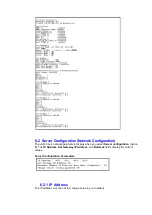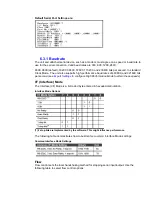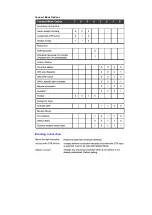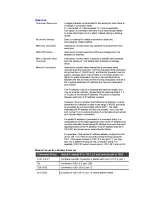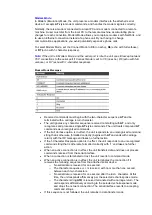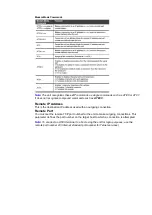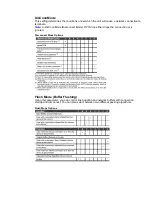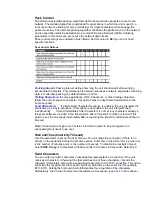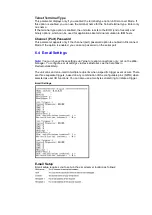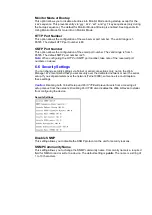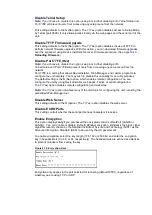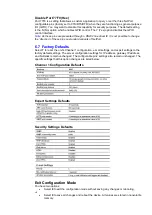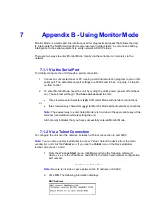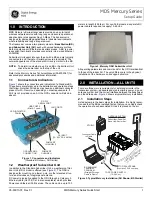
Disable Telnet Setup
Note:
If you choose to disable this option, keep in mind that disabling both Telnet Setup and
Port 77FE will prevent users from accessing any setup menu from the network.
This setting defaults to the N (No) option. The Y (Yes) option disables access to Setup Mode
by Telnet (port 9999). It only allows access locally via the web pages and the serial port of the
unit.
Disable TFTP Firmware Upgrade
This setting defaults to the N (No) option. The Y (Yes) option disables the use of TFTP to
perform network firmware upgrades. With this option, you can download firmware upgrades
over the serial port using
Device Installer’s Recover Firmware procedure. (See
Disable Port 77FE (Hex)
Note:
If you choose to disable this option, keep in mind that disabling both
Telnet Setup and Port 77FE will prevent users from accessing any setup menu from the
network.
Port 77FE is a setting that allows DeviceInstaller, Web-Manager, and custom programs to
configure the unit remotely. You may wish to disable this capability for security purposes.
The default setting is the N (No) option, which enables remote configuration. You can
configure the unit by using DeviceInstaller, web pages, Telnet, or serial configuration.
The Y (Yes) option disables remote configuration and web sites.
Note:
The Y (Yes) option disables many of the GUI tools for configuring the unit, including the
embedded Web-Manager tool.
Disable Web Server
This setting defaults to the N (option). The Y (Yes) option disables the web server.
Disable ECHO Ports
This setting controls whether the serial port echoes characters it receives.
Enable Encryption
This option displays
only
if you purchased the encrypted versions of NetPort (LAN03 or
LAN04)). You can enable or disable (default) Rijndael encryption. Rijndael is the block cipher
algorithm recently chosen by the National Institute of Science and Technology (NIST) as the
Advanced Encryption Standard (AES) to be used by the US government.
To enable encryption, select the key length (128, 192 or 256 bits) and enter the encryption
key in hexadecimals (32, 48, or 64, respectively). The hexadecimals are echoed as asterisks
to prevent onlookers from seeing the key.
Figure 4-10. Encryption Keys
Encryption only applies to the port selected for tunneling (default 10001), regardless of
whether you are using TCP or UDP.

